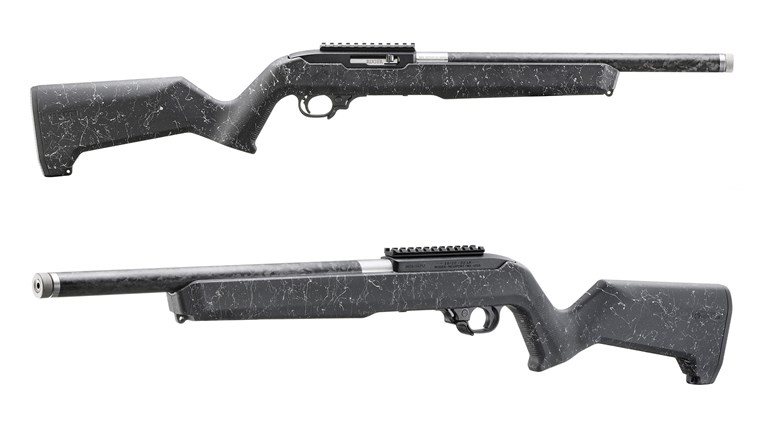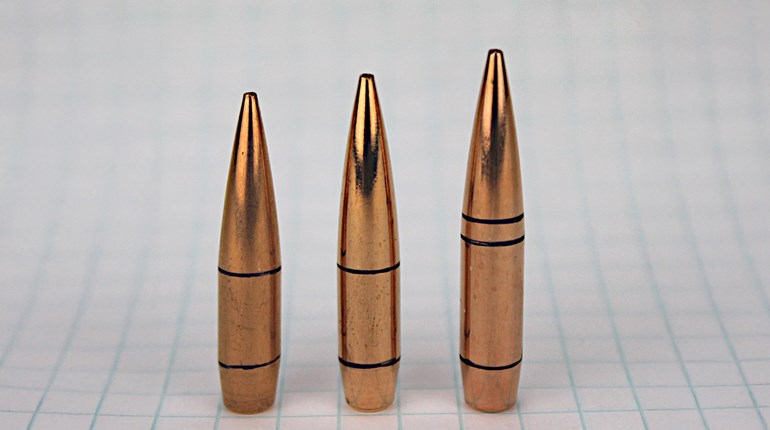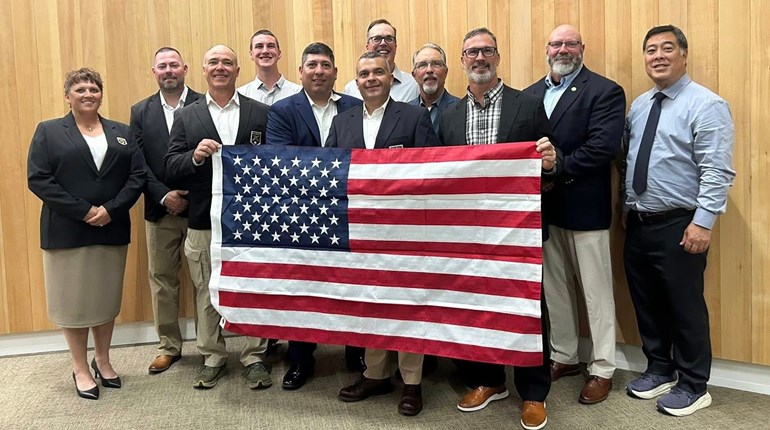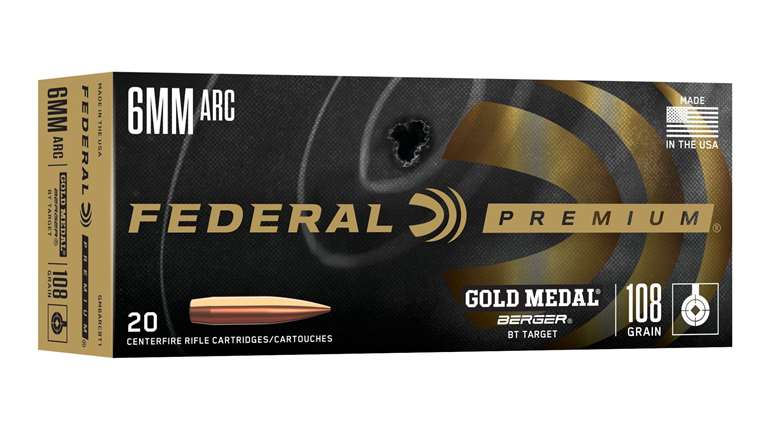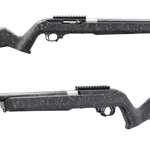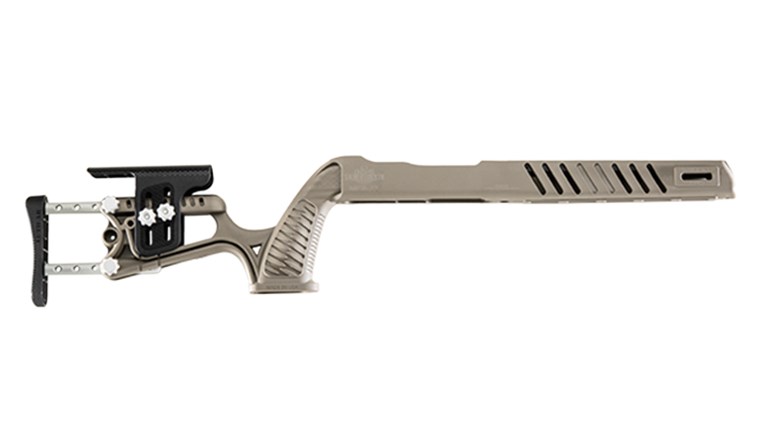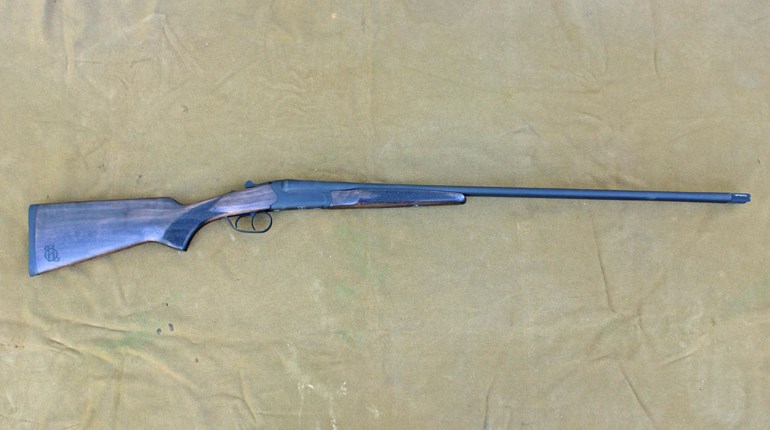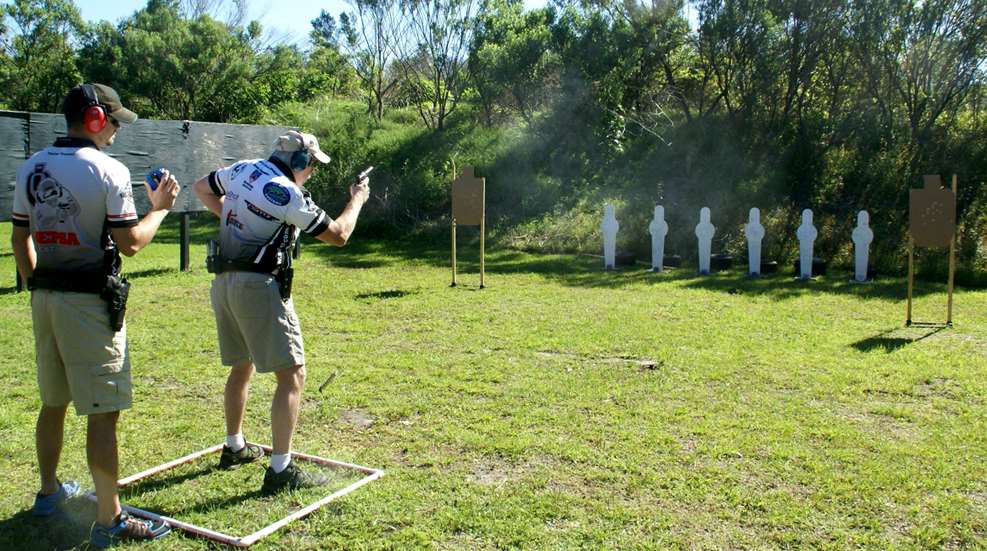
The Match Directors (MD) and their staff who volunteer their time to set up Action Pistol stages deserve a big thank you from shooters—because their task is a bit more complex than just putting up targets.
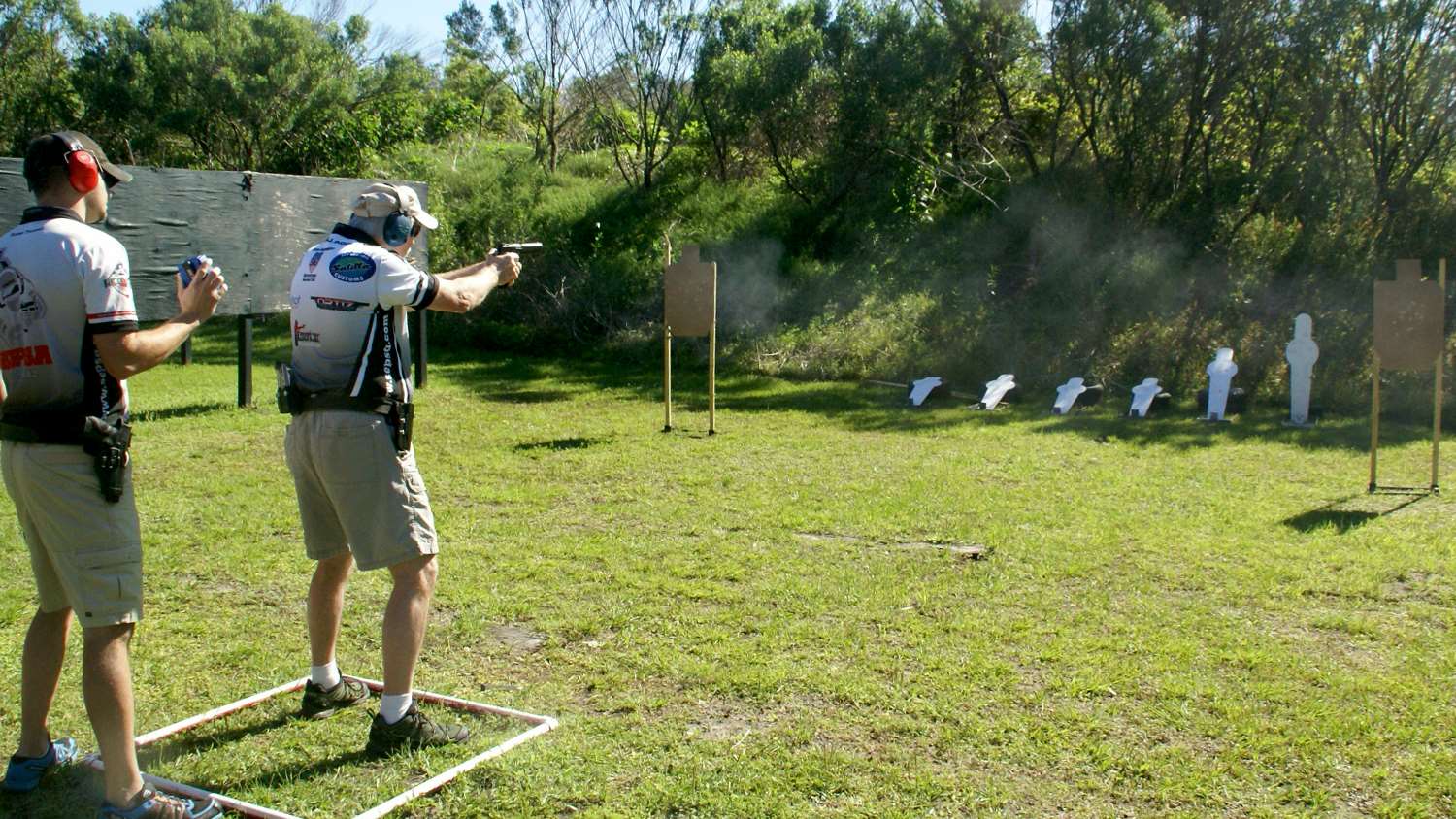
This doesn’t mean that every COF has to be “milk toast”—Start at P1, shoot three targets, move to P2 and shoot three more. The key to setting up action pistol stages that the newer shooters can handle—yet will challenge the Masters—is simply a matter of offering the shooter the option of a ‘risk/reward’.
An excellent example occurred at a recent IDPA club match. This stage featured five paper targets and one knock-down steel popper. The popper was an activator that triggered both a drop turner shoot target and a swinger with a Non-Threat target on it. All shooting was done from one position and the minimum round count of 11-rounds meant that SSP and ESP shooters could complete the stage without a reload—if they were good.
IDPA target priority rules dictated which targets had to be engaged in order. T1 was set 45 degrees to the shooter’s left at 10 yards. T2 was the popper, at 12 yards and slightly inside the first target. T4 was at 14 yards and set to the inside of the popper. T3 was the drop turner set at 7 yards and 45 degrees to the shooter’s right; activated by the popper. When it became visible it took priority over T4, and it only provided a brief display before turning away from the shooter. T5 and T6 were set at 20 yards, side by side and to the inside of the drop turner (T3). The swinging Non-Threat moved back and forth periodically covering both. Hitting the Non-Threat is a 5-second penalty.
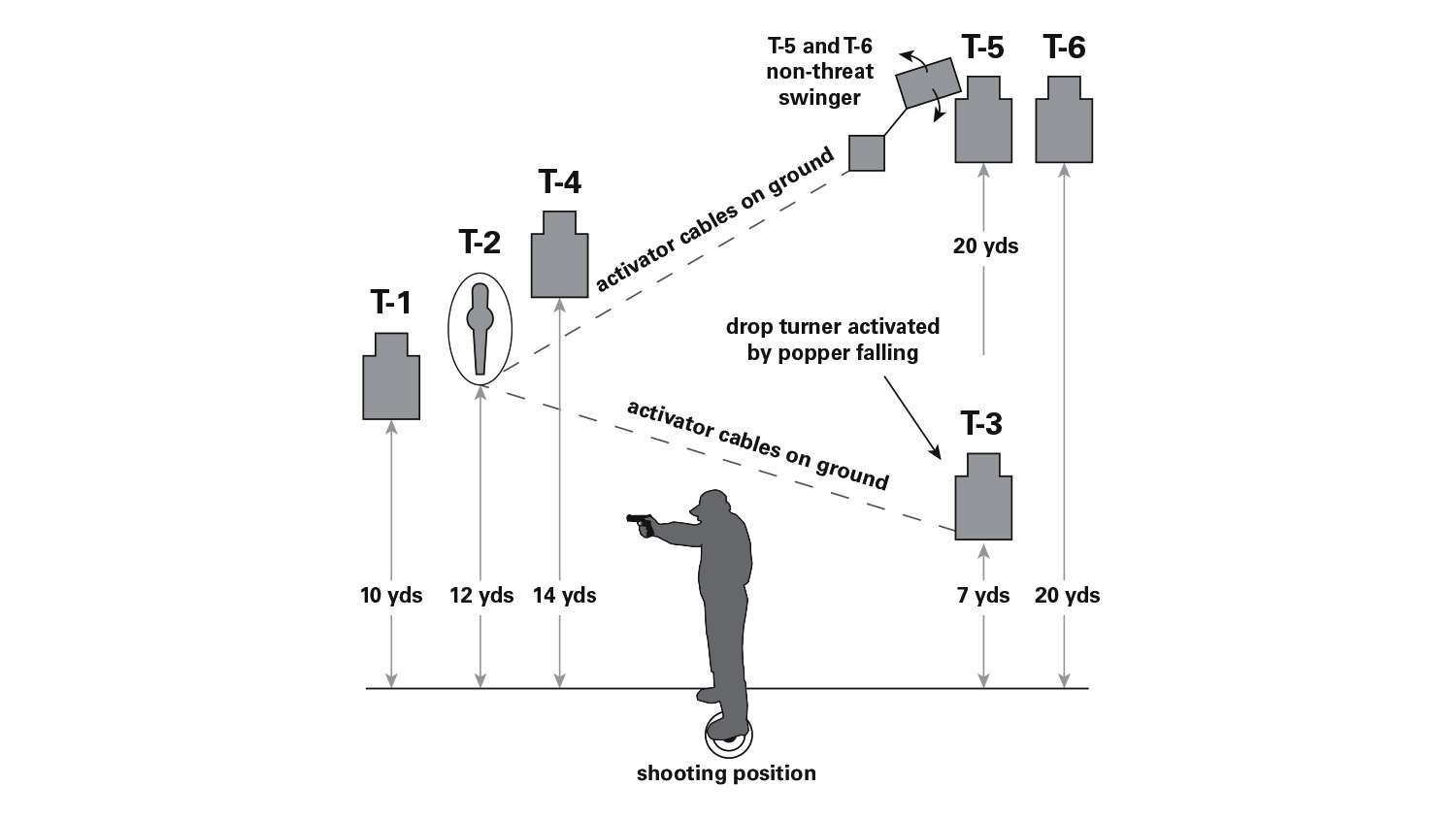
The newer shooters followed 'The Book'. They engaged T1, T2, T3, and back to T4. Then, standing upright, they made the transition to the remaining two targets and tried to time the Non-Threat swinger to give them clear shots on the 20 yard targets.
The skilled shooters, however, saw things a bit differently.
In watching the popper fall they realized that they had just enough time after hitting the popper to hit the 14-yard T4 behind it before the drop turner actually appeared and became a priority target. That saved transition time. They also weren’t worried about the Non-Threat swinging over the last two targets. Nothing in the rules said they had to shoot standing up! They just dropped to a low kneeling position, and their line-of-sight was now underneath the swinger, providing a clear view of the targets.
The ‘risk’ was that they wouldn’t get onto the drop turner in time. The reward was faster transitions that saved seconds over those who shot it by 'The Book'.
Sometimes even the best will crash and burn on risk/reward. But well-designed action pistol field courses will provide the risk/reward option. It just takes some creative thought. That can easily be accomplished via the addition of disappearing targets such as up-downs, drop turners, or clam shells. Let the shooter decide how to engage them.
Another option, often seen in USPSA, is to present distant targets that are visible from the start position but also visible at a shorter range if the shooter chooses to run completely through the COF and reach their position. Can you hit the targets at the start, and can you do it faster than the time it takes to run to that shooting position to engage them at closer range? Let the shooter decide.
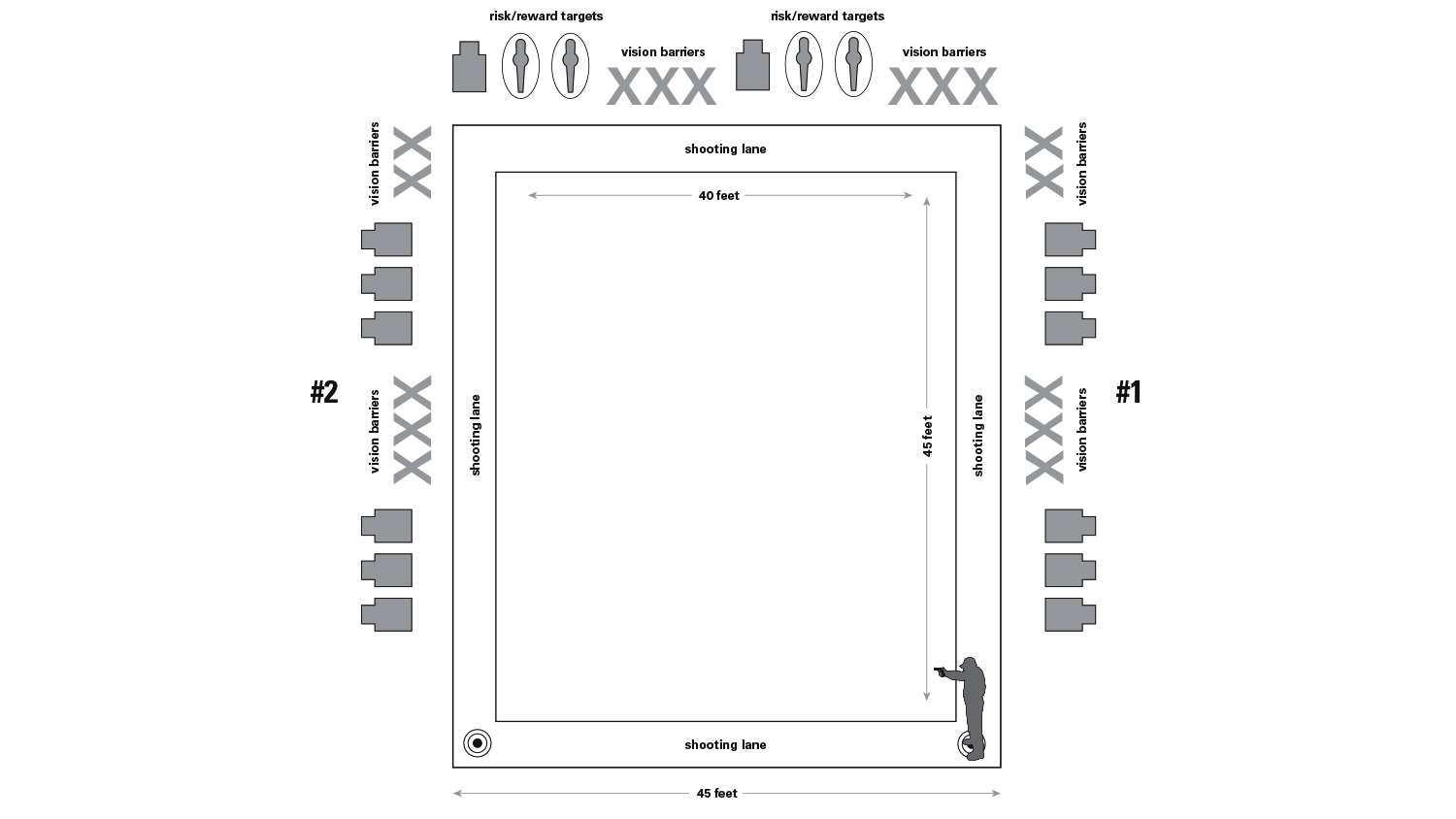
While mentally-challenging stages are good, savvy match directors do not overlook fun stages. As one veteran Match Director told me, “I’m in the entertainment business. I want shooters to have fun, and come back, because their entry fees are what allow us to put these matches on!”
When it comes to fast and furious fun—it’s hard to argue with knock-down steel! It’s a rare action shooter who doesn’t crack a smile when the ‘bang’ of their gun is immediately followed by a ‘ting’, and a steel target crashing to the ground.
The steel can be knock down plates or poppers (full-sized or mini), or a combination of the three. Minimum distance on steel should be 10 yards, but nothing says they can’t be back in the 20 yard area—or further.
It also doesn’t hurt to mix in scored paper targets. A popular USPSA stage has two pairs of poppers set three-feet apart, 45 degrees right and left of the shooter at 12 yards with a paper target in the middle at 7 yards. At the buzzer draw and shoot them in any order. Steel until down and the best two rounds on paper are scored. It’s fast! I’ve seen shooters drill six rounds and achieve a perfect score in as little as 3.65 seconds from the holster.
Another popular USPSA stage adds a gun handling wrinkle. Two paper targets are set 45 degrees right and left of the shooter at 10 yards, with five poppers aligned between and set three-feet apart at 12 yards. At the buzzer, draw and engage the two paper targets with a minimum of two rounds each, then make a mandatory reload and engage the five poppers. It’s a quick stage (I’ve seen times in the eight-second range) but there is a lot going on with the draw, wide transitions and accurate hits on paper, the reload, and then the steel. On both of these stages novice shooters have fun—and the experts get to show their impressive skills.
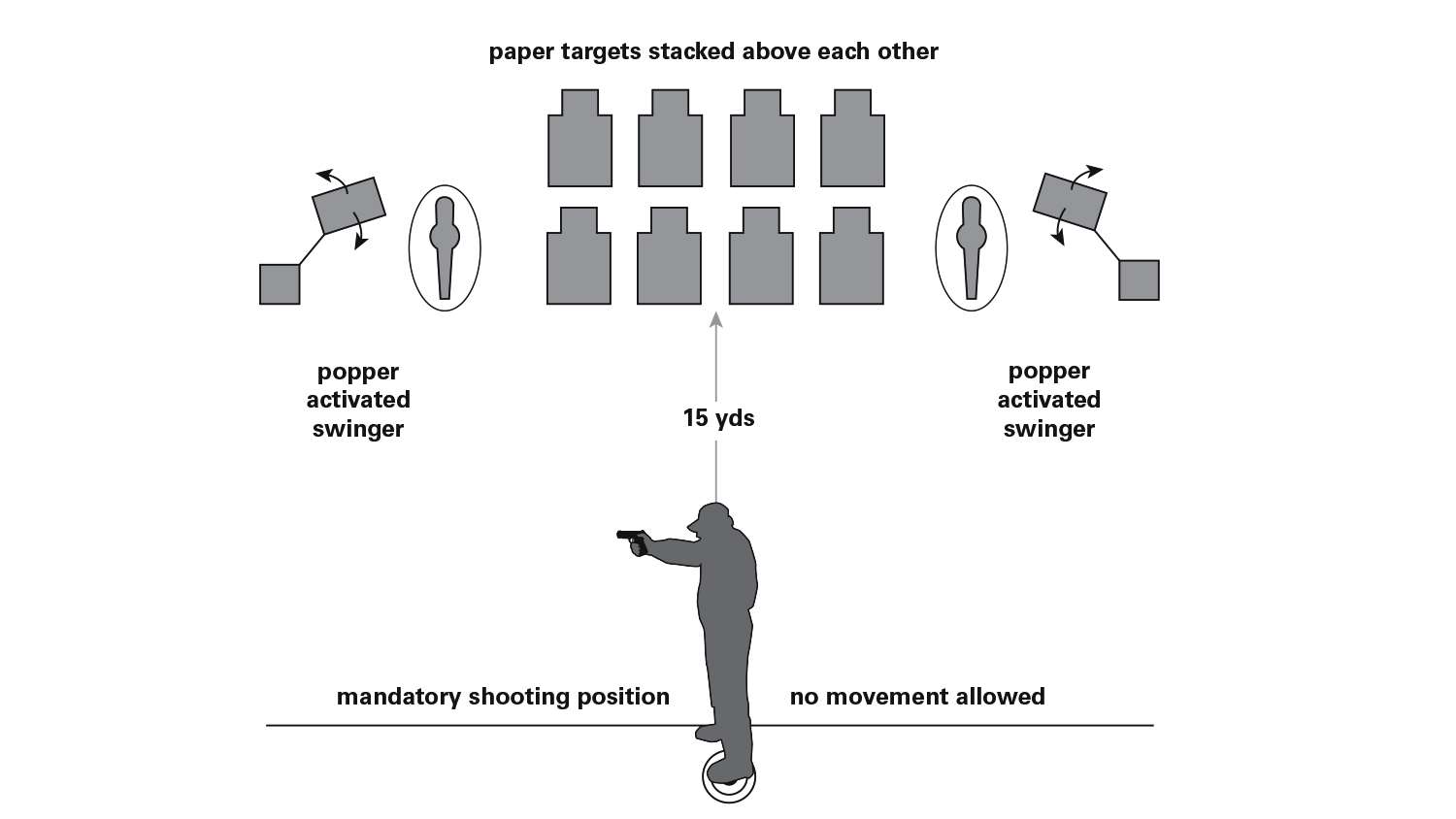
It’s not easy to come up with courses of fire that challenge the experts without running off the novice shooters. But, MDs don’t have to rely solely on their own brain power. There are clubs that post their COFs online—far too many to list here. But, a search for IDPA, or USPSA, or ICORE courses of fire will reveal many. They can be run as is, but the creative MDs will look them over and wonder, “What if I do this? What if I stick a drop turner or an up-down or clam shell here?”
That’s the key to designing Action Pistol stages—challenge the experts, but keep the novice shooters coming back.













